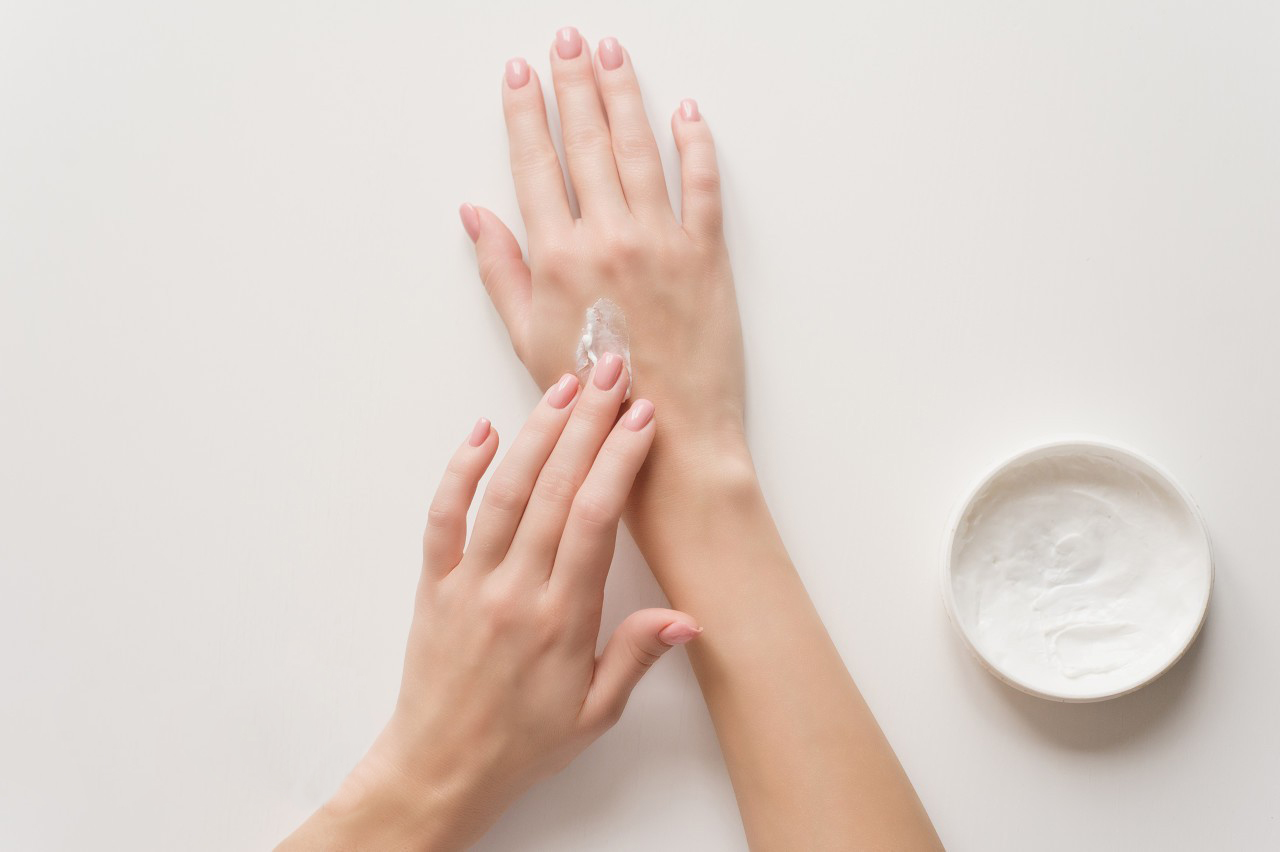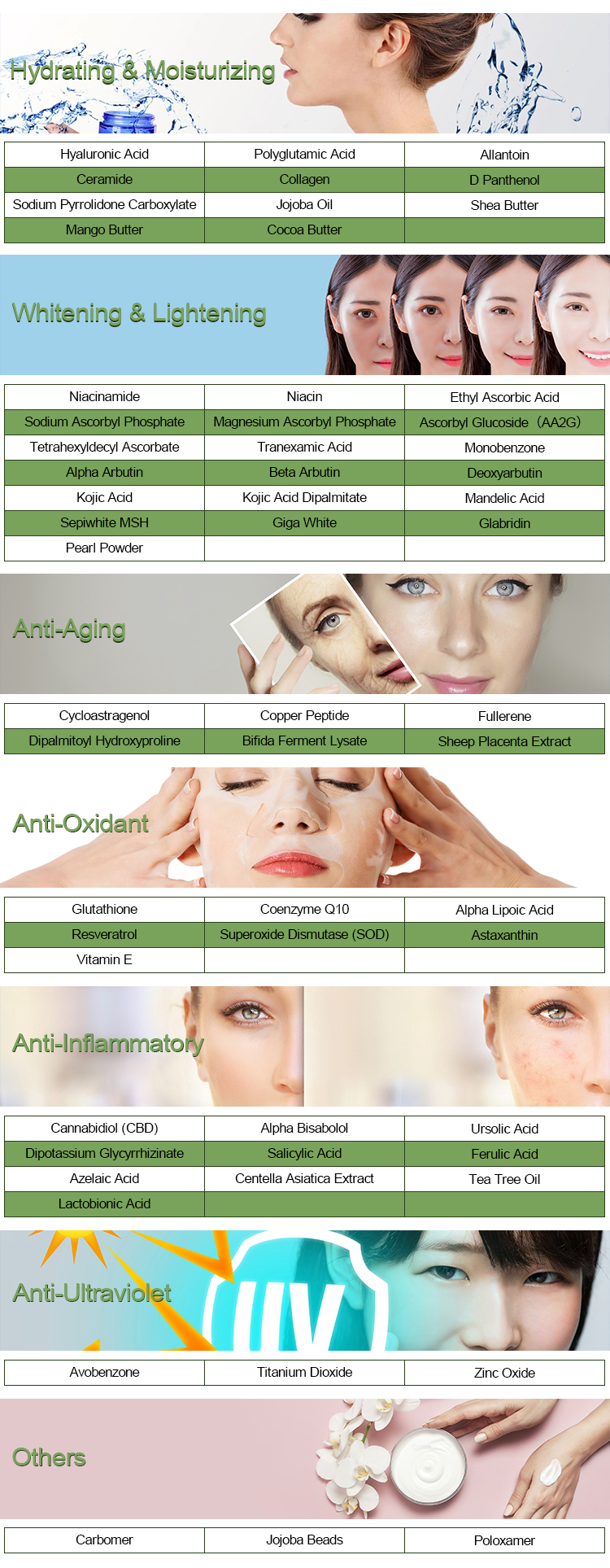Magnesium Ascorbyl Phosphate (MAP) is a stable and water-soluble derivative of vitamin C (ascorbic acid) commonly used in skincare products due to its antioxidant and skin-brightening properties. It is often incorporated into serums, creams, and other topical skincare formulations. Here’s a general overview of the materials and methods used in the production and formulation of MAP-based skincare products:
Materials of Magnesium Ascorbyl Phosphate:
- Magnesium Ascorbyl Phosphate (MAP): This is the active ingredient, and it’s typically available as a white, odorless powder.
- Solvents: Water is the primary solvent used to dissolve Magnesium Ascorbyl Phosphate, as it is water-soluble. Additionally, other solvents like glycerin or propylene glycol may be used to improve texture and stability.

- Emollients: These are often used to provide a smooth texture and help retain moisture in the skin. Examples include oils like jojoba oil, squalane, or silicone-based compounds.
- Thickeners and Stabilizers: These are used to create the desired consistency and prevent separation or degradation of the product over time. Common thickeners include carbomer, xanthan gum, or cellulose derivatives.
- Preservatives: To prevent microbial growth and extend the product’s shelf life, preservatives like phenoxyethanol or parabens may be added.
- pH Adjusters: Since the pH of the product can affect its stability and skin compatibility, pH adjusters like sodium hydroxide or citric acid are used to maintain the desired pH level, typically around 5.5 to 7.
Methods of Magnesium Ascorbyl Phosphate:
The formulation of a skincare product containing Magnesium Ascorbyl Phosphate generally involves several steps:
- Weighing and Measuring: Accurately weigh and measure the required amounts of MAP and other ingredients based on the intended formulation. This step is crucial to ensure product consistency.
- Dissolving Magnesium Ascorbyl Phosphate: Magnesium Ascorbyl Phosphate is usually added to warm water and stirred until it completely dissolves. It’s essential to monitor the temperature and ensure that Magnesium Ascorbyl Phosphate is fully dissolved.
- Incorporating Other Ingredients: Gradually add other ingredients such as emollients, thickeners, and stabilizers while continuing to mix. The order in which ingredients are added may vary depending on the specific formulation.
- Adjusting pH: Use pH adjusters to reach the desired pH level for the product. The pH level can affect the stability and efficacy of Magnesium Ascorbyl Phosphate.
- Preservation: Add preservatives to prevent microbial contamination and extend the product’s shelf life. Ensure that the preservatives are thoroughly mixed into the formulation.

- Testing: Conduct stability and compatibility tests to ensure that the product remains stable over time and does not cause adverse reactions when applied to the skin.
- Packaging: Transfer the final product into suitable containers, which are often opaque or dark-colored to protect the product from light, as light can degrade vitamin C derivatives.
- Labeling: Label the product with all necessary information, including the ingredients list, usage instructions, and any warnings.
It’s important to note that the specific formulation and methods used can vary from one skincare product to another, depending on factors like the desired texture, concentration of Magnesium Ascorbyl Phosphate, and additional active ingredients. Manufacturers may also follow specific guidelines and regulations for cosmetic and skincare product formulation.
